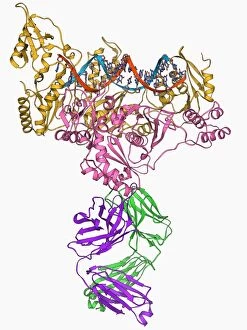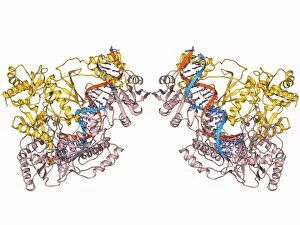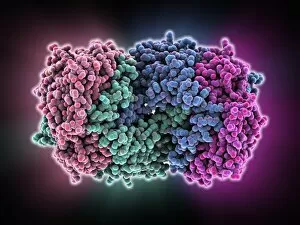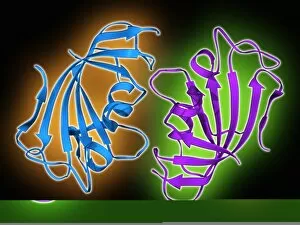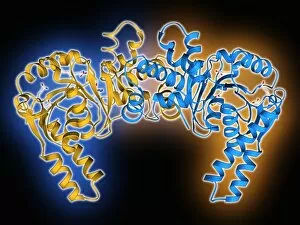Biological Catalyst Collection
"Unlocking the Secrets of Biological Catalysts: Exploring HIV Reverse Transcription Enzyme and More" Did you know that within our bodies
For sale as Licensed Images
Choose your image, Select your licence and Download the media
"Unlocking the Secrets of Biological Catalysts: Exploring HIV Reverse Transcription Enzyme and More" Did you know that within our bodies, there exist remarkable biological catalysts capable of driving crucial chemical reactions? One such catalyst is the HIV reverse transcription enzyme (F006 / 9606), a key player in the replication process of the notorious virus. This enzyme enables the conversion of viral RNA into DNA, allowing HIV to integrate its genetic material into human cells. But it doesn't stop there – another variant of this enzyme, F006 / 9494, also contributes to HIV's replication cycle. These enzymes hold immense significance in understanding and combating this global health challenge. Beyond HIV research, scientists have delved into other fascinating biological catalysts. The hepatitis C polymerase enzyme has captivated researchers due to its role in replicating the hepatitis C virus genome. By studying this catalytic marvel, we can gain insights into potential treatments for this debilitating disease. Shifting gears from viruses to nature's wonders, nitrogen-fixing molybdenum iron enzymes take center stage. These incredible catalysts enable certain bacteria to convert atmospheric nitrogen gas into a form usable by plants and animals. Such enzymatic activity plays a vital role in maintaining ecological balance and sustaining life on Earth. Returning to our focus on HIV research, yet another variant emerges – C013 / 9613 – shedding light on additional aspects of reverse transcription processes within infected individuals. As we continue unraveling these intricate biological catalysts' mechanisms and functions, we inch closer towards developing novel therapeutic interventions against various diseases while expanding our knowledge about fundamental biochemical processes at play within living organisms. The world of biological catalysts remains an exciting frontier for scientific exploration as we strive to harness their power for both medical advancements and environmental sustainability.

